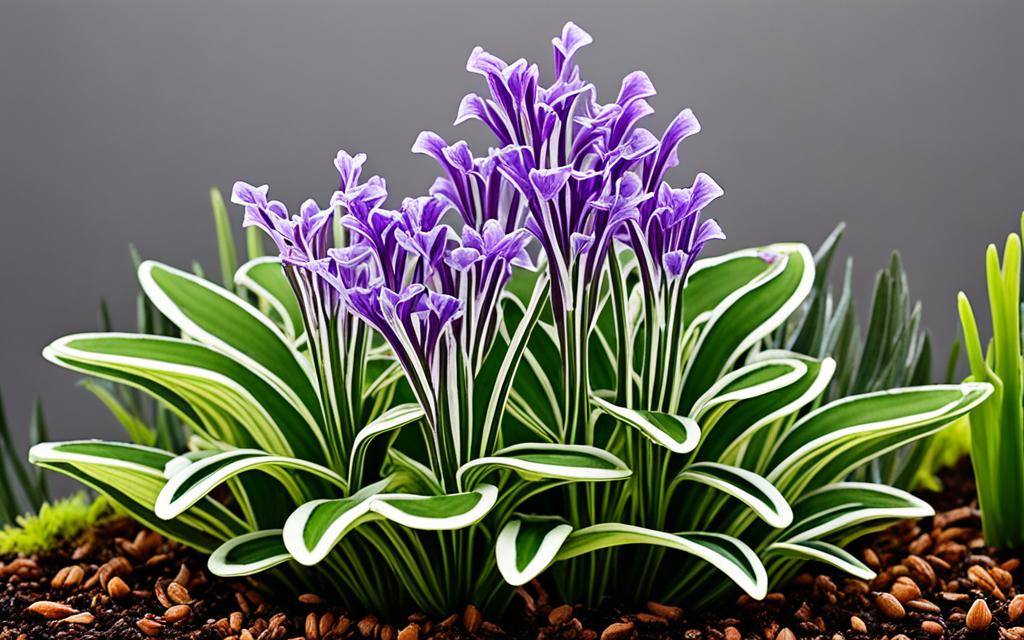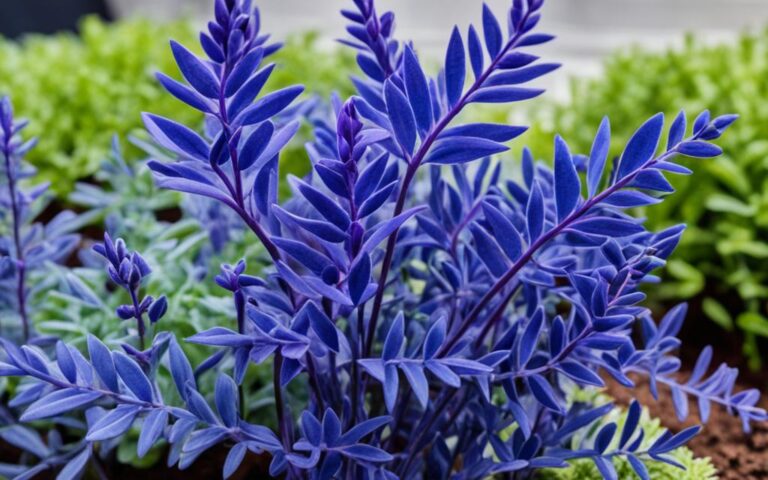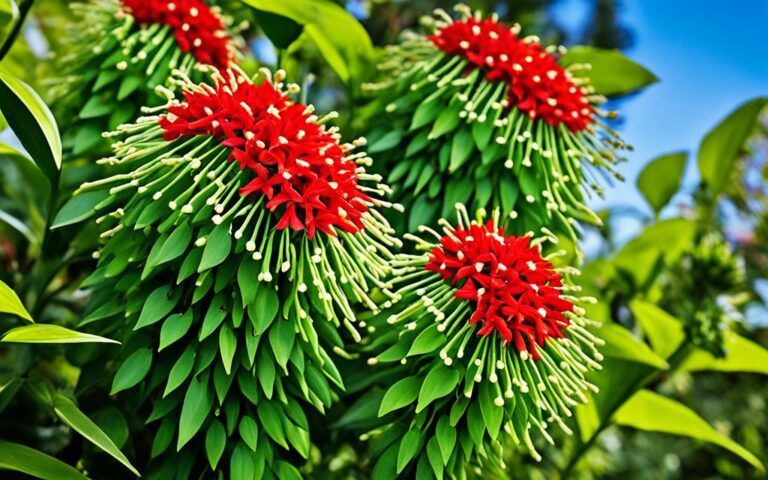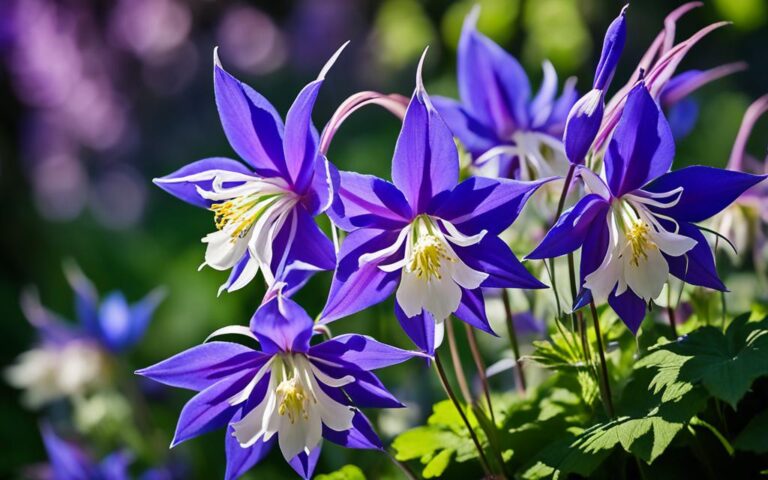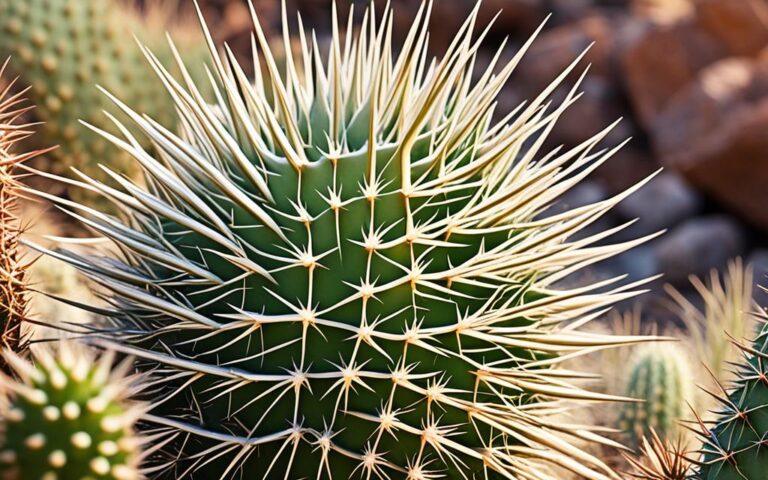Butterwort Plant: Carnivorous Beauty for Your Garden
There are over 80 different kinds of butterwort (Pinguicula) plants. They are found on every continent except Australia and Antarctica. These plants are known for catching insects and are a unique choice for gardens or greenhouses.
Key Takeaways
- Butterworts belong to a genus with over 80 distinct species.
- These carnivorous plants are native to every continent except Australia and Antarctica.
- Butterworts come in a variety of sizes, from as small as an inch to as large as 18 inches tall.
- The leaves and flowers of butterworts exhibit a wide range of vibrant colors.
- Butterworts use their sticky, mucilage-coated leaves to trap and digest insects.
Introduction to the Butterwort Plant
Butterworts (Pinguicula) are fascinating carnivorous plants. They have a special way of catching insects and are known for their unique features. These plants belong to the bladderwort family, Lentibulariaceae. They live in places with little nutrients by eating insects on their sticky leaves.
Fascinating Carnivorous Plants
Carnivorous plants have special ways to survive in places with few nutrients. Butterworts, along with pitcher plants, sundews, and Venus flytraps, catch and eat insects. This unique way of getting nutrients makes them interesting to plant lovers and gardeners.
Unique Foliage and Blooms
Butterworts have leaves in many colors and shapes, from white to pink, green, or yellow. Their flowers can be bright yellow, purple, red, pink, or white. These plants are not only interesting but also beautiful, perfect for greenhouses or gardens.
Varieties of Butterwort Plants
The butterwort (Pinguicula) genus has over 80 diverse species worldwide, except in Australia and Antarctica. These carnivorous plants split into two main groups: temperate and tropical butterworts. Each type has special traits to live well in its climate and place.
Temperate Butterwort Species
Temperate Pinguicula species are tough and grow well in many places, from USDA Zones 1 to 11. They come from North America, Europe, and Asia, living in bogs, rocky areas, and even on other plants. The blue butterwort (Pinguicula caerulea) likes sunny spots, while the yellow butterwort (Pinguicula lutea) does well in bogs with some shade.
Tropical Butterwort Species
Tropical Pinguicula species live in warm climates, mainly in Central and South America, and Mexico. They need warm temperatures and lots of humidity to grow. Though not as cold-tolerant as temperate ones, they add beauty to gardens and terrariums in the right places.
| Butterwort Type | USDA Zones | Habitat | Notable Species |
|---|---|---|---|
| Temperate | 1-11 | Bogs, rocky slopes, epiphytic | Pinguicula caerulea, Pinguicula lutea |
| Tropical | Warmer climates | Central and South America, Mexico | Various species adapted to warmer conditions |
Whether they’re temperate or tropical, the Pinguicula genus gives us many carnivorous plant choices. Gardeners and fans can explore and enjoy these unique plants.
The Anatomy of a Butterwort Plant
Butterwort plants, also known as Pinguicula, have a special way to catch and digest insects. Their leaves are covered in fine hairs that make a sticky substance. This sticky stuff attracts insects with its sweet smell and shiny look, then traps them.
Insect-Trapping Leaves
The leaves of butterworts are perfect for catching insects. When insects land, they get stuck in the sticky mucilage. Some butterworts can even curl their leaves to keep their prey safe from the outside.
Once caught, the insects get covered in digestive enzymes. These break them down, giving the plant the nutrients it needs.
Unique Flowers and Stems
Butterworts also have special flowers on long stalks. These flowers come in colors like blue, violet, white, and sometimes red. They attract bees and butterflies.
The plant’s roots are small and mainly help it stay in place and get moisture. Most of its nutrients come from the insects it eats.
| Butterwort Characteristics | Details |
|---|---|
| Number of Known Species | Approximately 80 |
| Leaf Size Range | 2 to 30 cm in length |
| Leaf Color Variations | Bright green, pinkish, or yellow |
| Flower Colors | Blue, violet, white, and occasionally red |
| Chromosome Numbers | Typically n = 8 or n = 11 |
Butterwort plants are really interesting because of their special leaves and flowers. They have adapted to live in their environment in a unique way. By studying their anatomy, we can learn more about how they survive.
Ideal Growing Conditions for Butterwort Plants
Butterworts, also known as Pinguicula plants, need specific conditions to grow well. They love bright, indirect light and temperatures above 64°F. High humidity is key for their growth and health.
For soil, temperate Pinguicula prefer peat-based mixes. Tropical types like a nutrient-rich, well-draining mix better. The best pH for butterworts is between 4.5 and 6.5, keeping them in an acidic environment.
Watering depends on the species, but always use distilled or filtered water. This prevents mineral buildup. It’s crucial to balance watering to avoid over or underwatering, checking the soil’s moisture often.
Lighting and Temperature Requirements
- Butterworts need bright, indirect light to stay carnivorous and colorful.
- Keep temperatures above 64°F, with some species tolerating cooler times when dormant.
- Tropical butterworts do well in 75-100°F summers and 45-75°F winters.
Soil and pH Preferences
- Temperate Pinguicula like peat-based soil.
- Tropical types prefer a mix of sand, perlite, vermiculite, and peat for nutrients and drainage.
- The best pH for butterworts is 4.5 to 6.5 for nutrients.
Watering and Humidity Needs
- Use distilled or filtered water to prevent mineral buildup.
- Keep humidity high, which is vital for butterworts.
- Avoid overwatering, as it’s as bad as underwatering.
“Butterworts show the amazing diversity and adaptability of carnivorous plants. Their unique needs make them fascinating for gardeners and plant lovers.”
Propagating Butterwort Plants
Butterworts are fascinating carnivorous plants that can be grown from different parts. Gardeners can increase their collection or share these unique plants. You can use seeds, leaves, or gemmae to multiply butterworts.
From Seeds
To grow butterworts from seeds, you need to pollinate the flowers by hand. Then, put the seeds in a seed tray with good soil. Keep the temperature steady to help the seeds grow.
Don’t overwater the seeds. This can stop them from growing and might cause mold or fungus.
From Leaf Pullings
Leaf pullings are another way to grow butterworts. Take mature leaves and lay them on the soil. This works well for some Pinguicula species. You can also use gemmae, which form during dormancy.
The best time to take leaf pullings is in the spring. With care, these pullings can grow into new plants in 1-2 months.
| Propagation Method | Key Considerations | Approximate Time to Maturity |
|---|---|---|
| Seed Propagation | Hand-pollinate flowers, sow seeds in well-draining medium, maintain consistent temperatures | 1 year to 18 months |
| Leaf Pullings | Take leaf pullings in spring, monitor for new growth, provide high humidity | 1-2 months for small plants |
| Gemmae Propagation | Sow cone-shaped gemmae during dormancy, promote rapid growth | 2 months for baby plants |
With patience and the right methods, gardeners can grow butterworts successfully. This ensures these unique carnivorous plants continue to thrive.
Caring for Your Butterwort Plant
To keep a butterwort plant thriving, you need to pay close attention to its care. These plants have special needs for watering, humidity, soil, and fertilizer.
Watering and Humidity Needs
Butterworts don’t like minerals and salts in tap water. Use distilled, rainwater, or water from a reverse osmosis filter for the best results. Make sure the soil stays moist but not too wet, as they can easily rot. Keeping the humidity around 60-80% is also key for their health.
Soil and Fertilizer Requirements
The best soil mix depends on the butterwort type. For temperate ones, use peat-based soil. Tropical types prefer a nutrient-rich, well-draining mix. A good mix is one part peat moss, three parts perlite, and one part vermiculite.
Butterworts don’t need much fertilizer. Yet, a balanced, diluted fertilizer can be used sometimes during the growing season.
“Caring for a butterwort plant requires attention to its specific needs, from providing the right water and humidity levels to selecting the appropriate soil and fertilizer.”
By knowing and meeting the needs of butterwort plants, gardeners can help them grow and thrive. These carnivorous plants are truly unique and beautiful.
Butterwort Plant: Carnivorous Beauty for Your Garden
The butterwort plant is a captivating addition to any garden. It has a carnivorous nature and unique features. Its leaves and flowers are visually striking, making it a natural pest control solution. It also adds beauty to wetland or greenhouse settings.
Butterworts belong to the Pinguicula genus, which includes 75 species of carnivorous plants. They are found worldwide, except for Australia and Oceania. These plants are often compared to other carnivorous wonders like pitcher plants, sundews, and Venus flytraps.
The deadly rosette of leaves in butterworts can reach up to 20 cm in some species. They trap insects with their sticky, glandular surfaces. The most common cultivar in garden centers is Pinguicula ‘Tina’. It’s easy to grow indoors and needs strong light, acidic soil, and specific watering.
Hardy species like Pinguicula grandiflora, Pinguicula alpina, and Pinguicula corsica are great for outdoor gardens. They can handle different conditions. Butterworts don’t do well in temperatures below 10°C, so they’re best in indoor pots.
Adding the butterwort plant to your garden brings a touch of botanical curiosity and natural pest control. It’s a visually striking and educational addition to your garden space.
Pest and Disease Management
Butterworts, or Pinguicula, are mostly easy to care for. Yet, they can face pests and diseases. Issues like mealybugs, scale insects, and fungal infections might happen. Keeping the right growing conditions and not watering overhead can prevent many problems.
If pests or diseases hit, natural remedies work well. For pests, use insecticidal soaps made for carnivorous plants. Fungicides for these plants can fight fungal diseases.
Preventing Butterwort Pests and Diseases
- Keep the right soil, water, and light for your plants.
- Don’t water from above to stop fungal infections.
- Check your plants often for pests or diseases early.
- Keep sick plants away from healthy ones.
Treating Butterwort Pests and Diseases
- Use insecticidal soaps for carnivorous plants against pests.
- Apply fungicides for carnivorous plants to fight fungal infections.
- Try a ready-to-use spray with Imidacloprid, Tau-Fluvalinate, or Tebuconazole.
- For stronger solutions, mix 14ml of concentrate with 650ml of distilled water.
- Be careful not to spray traps or inside pitchers. Test on a small part of the plant first.
By using these tips, gardeners can keep their butterwort plants healthy and long-lasting.
Butterwort plants, also known as Pinguicula spp., help control pests like fungus gnats and fruit flies.
Benefits of Growing Butterwort Plants
Beyond their unique look, butterwort plants have many benefits for gardeners and the planet. They are natural pest controllers. They catch and eat insects like gnats, flies, and aphids, cutting down on the need for harmful chemicals.
Natural Pest Control
The Common Butterwort plant helps control pests by trapping gnats, flies, and aphids. It’s a natural way to keep your garden or indoor area pest-free. The plant’s sticky leaves catch and digest these pests, making your space healthier.
Air Purification
Butterworts also help purify the air and recycle nutrients as they break down trapped insects. This makes them a great choice for indoor and outdoor gardens. They improve air quality and support a healthier living space.
Looking after a butterwort plant can also help you relax and reduce stress. Studies show that touching the plant’s leaves can be calming. It’s a way to find peace and stay in the moment.
“Tending to the Common Butterwort can become a ritualistic escape, fostering emotional grounding and encouraging a present state of mind amid life’s chaos.”
Butterwort Plant in History and Culture
The butterwort plant has a long history and is important in Scandinavian culture. For a long time, people in Scandinavia used its leaves in traditional ways. They used it to make meat tender, curdle milk, and create a special fermented dairy called tettemelk, långfil, or filmjölk.
People also thought the butterwort plant had antibacterial properties. This led to its use in treating skin and breathing problems. The plant is also part of folklore, with amulets made from it said to protect against witches and fairies in some traditions.
Butterworts have been a big part of human history and culture. They were used in everyday life in Scandinavian homes and also in myths. The butterwort has made a special mark in our stories and traditions.
| Butterwort Uses in History and Culture | Description |
|---|---|
| Meat Tenderizer | Scandinavians used butterwort leaves to tenderize meat. |
| Milk Curdling | Butterwort was used to curdle milk for the production of traditional fermented dairy products. |
| Traditional Fermented Dairy | Butterwort was used in the making of tettemelk, långfil, or filmjölk, traditional Scandinavian fermented dairy products. |
| Medicinal Uses | Butterwort was believed to have antibacterial properties and was used to treat skin conditions and respiratory issues. |
| Folkloric Beliefs | Amulets containing butterwort were thought to ward off witches and fairies in some Hebridean traditions. |
“The diverse ways in which butterworts have been integrated into human history and culture demonstrate the plant’s enduring significance.”
Unique Aesthetic Appeal of Butterwort Plants
The butterwort plant catches the eye with its unique look. Its leaves are frilly and sticky, in colors like green, purple, and pink. The plant’s flowers are bright and stand alone, adding to its charm. This makes the butterwort a great conversation starter, especially for those who love plants.
This plant’s special look brightens up any space. Approximately 80 known species of Butterwort exist, each with its own unique beauty. The vibrant flowers and distinctive foliage make it a standout, often becoming the centerpiece of a garden or indoor display.
The Pinguicula laueana ‘Red’ comes from Mexico’s cloud forests. It shows the plant’s cultural and historical importance in the region’s rich biodiversity. A study found that the vibrant color of the Pinguicula laueana ‘Red’ makes indoor spaces more lively.
The butterwort’s unique foliage and carnivorous nature grab attention. It’s perfect for gardens or as a houseplant. The butterwort’s striking aesthetics bring natural beauty and intrigue to any space.
Educational Value of Butterwort Plants
The butterwort plant is a great example of educational value. It shows how plants adapt and survive in tough conditions. Its carnivorous nature lets it trap and digest insects, making it a unique plant. This process helps it live in places with little nutrients.
Watching how the butterwort’s sticky leaves and enzymes work is fascinating. It teaches us about carnivorous plants. This makes the butterwort perfect for those into botany, plant biology, and nature’s survival tricks.
There are 450 species of carnivorous plants in 6 families. The butterwort is just one of them. These plants eat insects and small animals to survive in places with little food. They can live in dry lands or near water. Learning about them teaches us about plant anatomy, ecology, and evolution.
By studying the butterwort, we learn about the adaptations of carnivorous plants. This knowledge helps us understand plant biology, ecosystem dynamics, and the diversity of life. The butterwort’s unique look makes it a great way to learn about botanical education and carnivorous plant mechanics.
“The butterwort plant is a fascinating example of how plants can adapt to thrive in nutrient-poor environments, offering valuable insights into the diverse survival strategies employed by the natural world.”
Medicinal and Herbal Uses of Butterwort Plants
The butterwort plant has a long history of being used for medicine and herbal remedies. In Scandinavia, people used its leaves for skin problems and breathing issues. They also made infusions from the stems to help children with various illnesses.
Scandinavian farmers knew about the butterwort’s antibacterial properties. They used the leaves to treat wounds on cattle. Today, we don’t focus much on butterwort in medicine. But, learning about its past use shows us how plants can help with health and remedies.
Butterwort plants are great for antispasmodic and antitussive uses, helping with coughs. You can make a special milk by infusing the leaves, which tastes better than regular milk. Plus, you can also make a dye from the leaves.
| Medicinal Use | Traditional Application |
|---|---|
| Cough Remedy | Infusions from flowering stems used as a home remedy |
| Skin Treatments | Leaves used to treat skin conditions |
| Respiratory Health | Leaves used to treat respiratory issues |
| Wound Sterilization | Leaves rubbed on cattle sores to help sterilize |
| Milk Curdling | Leaves infused in milk to curdle and improve taste |
Even though butterwort isn’t a big deal in modern medicine, its past use in traditional remedies is interesting. It shows us there might be more to learn about its health benefits.
Conclusion
The butterwort plant is a captivating and versatile addition to any garden or indoor space. It’s a carnivorous plant that controls pests naturally. Its insect-trapping leaves and vibrant blooms make it a botanical curiosity that sparks interest.
It also offers educational value by showing how carnivorous plants survive. This plant is perfect for those who love beauty, nature, or history.
The butterwort has a wide range and unique leaves. It thrives in greenhouses and is part of wetland flora. It shows the amazing diversity and adaptability of nature.
In conclusion, the butterwort plant is a gem for gardeners and plant lovers. It offers natural pest control, air purification, and educational value.
